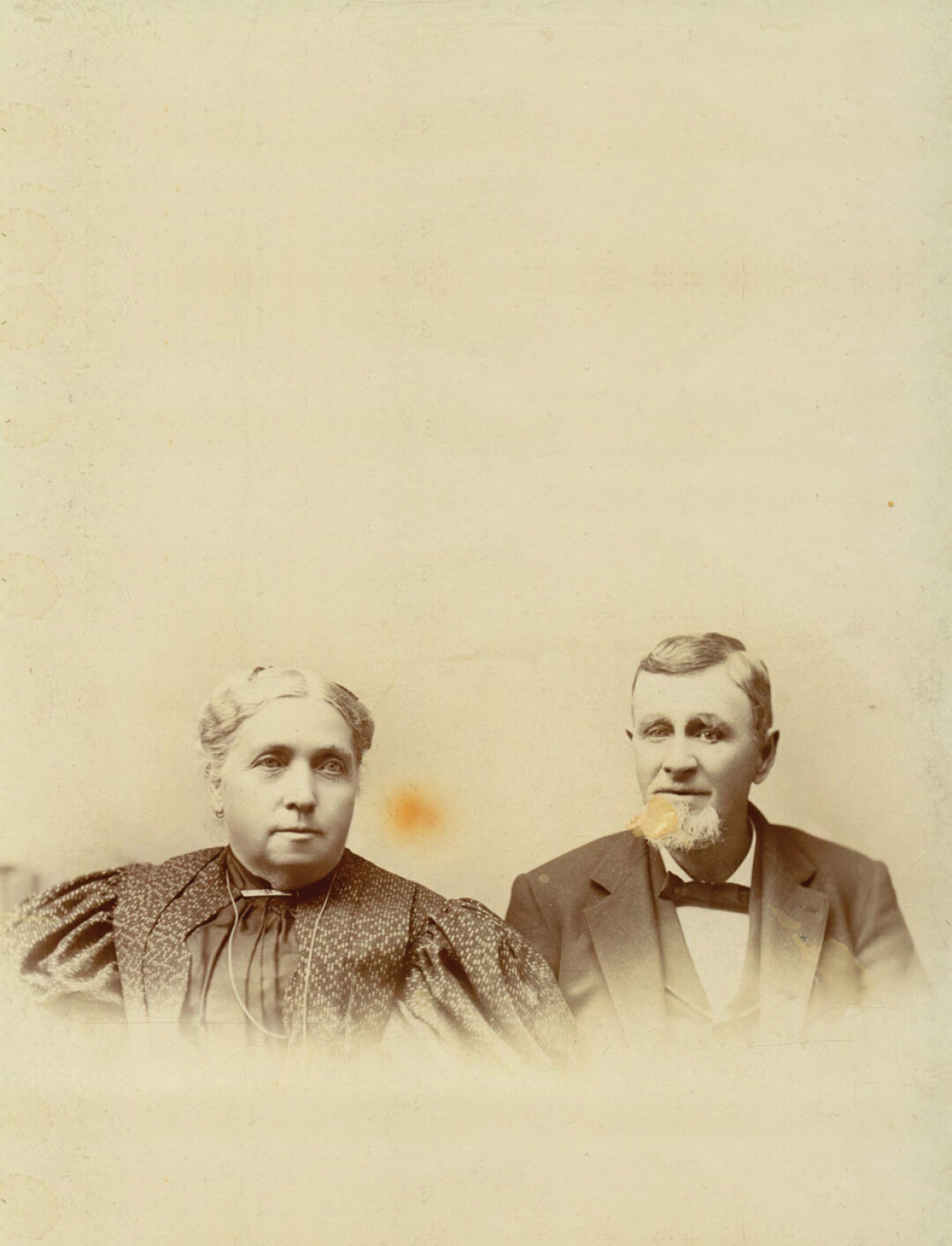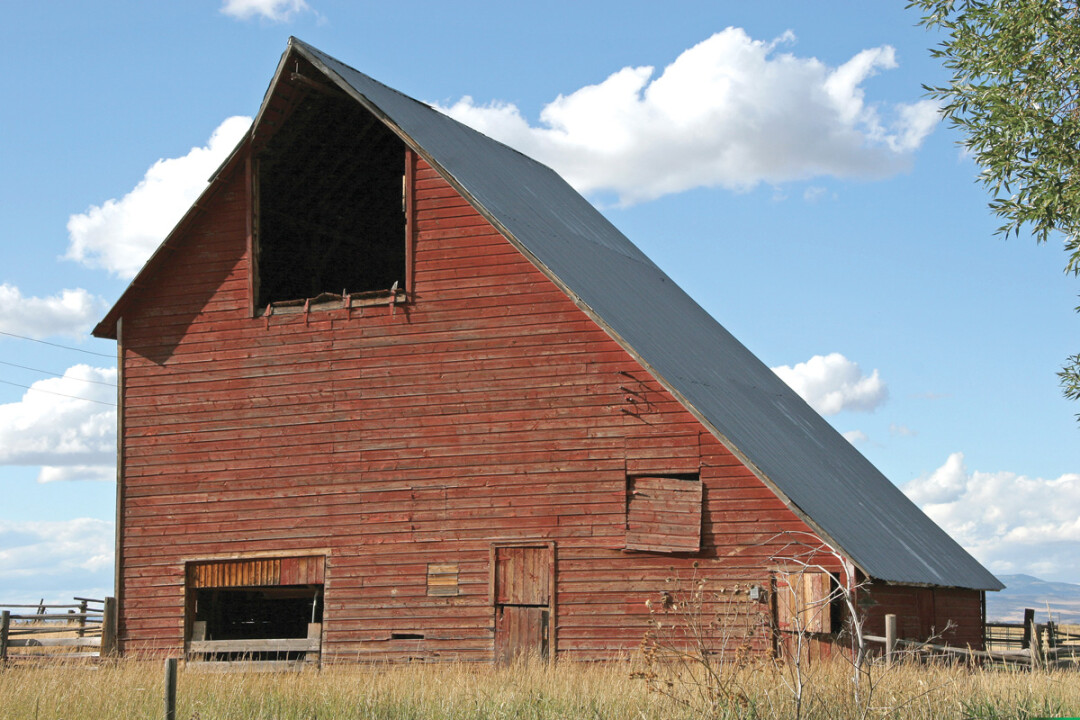Bozeman Pioneers: Christopher & Catherine Waterman
Chris Marie Forest | Thursday Aug. 1st, 2019
My great-great-grandparents, Christopher Hilliard Waterman and Catherine Boyle Waterman, were two of the founding pioneers of Bozeman, Montana. Their amazing pioneer stories were preserved and told to their children and grandchildren. Much of the Waterman’s immigrant story was also recorded in early newspaper accounts, oral interviews, and published Montana histories such as Progressive Men of Montana and the History of Montana by Helen Sanders.
Christopher was born into a farming family in Rutland, Vermont on January 24, 1826, to John Brown and Caroline Hilliard Waterman. He was the middle of 10 children. Through his mother’s family tree he was related to the Mayflower Pilgrims, John and Priscilla Mullins Alden.
After Christopher’s father died when he was young, he spent most of his early adult life at sea, sailing around the world many times as a sailor and then as an officer on merchant ships. One of his early exploits was in early 1850s San Francisco, California, during the Gold Rush at Sutter’s Mill. During one sailing trip to China, while stopping in San Francisco, the sailors all abandoned ship to seek their fortunes. Christopher was stuck in port. Deciding that gold mining was not for him, Christopher and a couple of friends bought a boat, “The Bay State,” and started an egg-selling business. They sailed out to Farralone Island 30 miles west of the bay and collected duck eggs. They then sold their eggs for $1.00 a dozen. Within a matter of two months, they had made over $1,000, along with $3,000 in seal oil and furs, which is about $120,000 in today’s market. Not a bad return for their money.
A short time later, however, he lost his fortune and his boat in a storm. Christopher did not believe in banks and all the gold nuggets that were payment from the miners were stored on the ship. When the boat was sinking off the shore of Port Reyes, California, Christopher and crew abandoned the sinking boat for a rowboat. According to family lore, Christopher left the gold behind. Now somewhere off the waters of California, there are gold nuggets worth a small fortune, ready for anyone with scuba gear to find.
Christopher returned to international sailing in the Atlantic Ocean with round trips to Europe. During one of these voyages to France in 1859, he met Catherine Boyle. Catherine was born June 13, 1835 in Paisley, Scotland to well-to-do parents John and Catherine Devlin Boyle. She was one of nine children. When Catherine Jr. was about seven, her father died, leaving her mother a pregnant widow. In 1852, Catherine Sr. and five of her children came to New York to join her two oldest sons who were already there. The whole family took up residence in Brooklyn, New York.
Around 1857 or 1858, Catherine’s older sister, who was recently married and had two small children, decided to move to her husband’s home country of France. Catherine went with her to help with the trip and stayed. She lived and worked at the New London Hotel, her brother-in-law’s business in La Havre, which catered to ship officers arriving in this international port.
Christopher and Catherine were married in France in 1859 by Christopher’s ship’s captain, and they sailed back to America in the early 1860s. They chose to move to Saginaw, Michigan to help out with the Waterman family’s flourishing cooperage (barrel making) business. Catherine and Christopher’s first son Jerome was born there on December 16, 1862.
In late 1863, during the height of the Civil War, Christopher heard of the untold treasures in Montana and wanted to see it all firsthand. He moved the family back to New York and settled Catherine and their son Jerome in with the Boyle family. Christopher set out for St. Joseph, Missouri, and along with three other men acquired a wagon and supplies. The group joined a Montana-bound wagon train in May 1864.
Christopher had many adventures during his trip to Montana. According to Christopher, thousands of Native Americans watched the wagon train as it traveled up a mountain pass (most probably the Bozeman Pass). The Native Americans “escorted” the travelers up into the Gallatin Valley. These tribes were considered hostile—a result of broken treaties on the part of Washington D.C. This area was a sacred hunting ground and per a treaty with the US government, was off limits to white settlers. The escort disappeared without incident once they reached the Gallatin Valley.
Christopher was overwhelmed at the sight that awaited him in the valley. The grass was hip-high and the streams and surrounding area were teaming with wildlife. He wanted to stay but honored the commitment to go on to Virginia City to mine gold with his wagon mates. However, after a few weeks, Christopher decided again that gold mining was not for him and returned to the Gallatin Valley. He settled near Middle Creek with one of his friends.
One of the tales that Christopher told was that the city of Bozeman should have been named Waterman. Christopher arrived in the summer of 1864, and while resting in the valley with his train, John Bozeman and his wagon train arrived. When Christopher came back to the valley after his brief trip to Virginia City, Bozeman had a land claim and proclaimed the town in his name. Christopher thought that if only he had made a homestead claim when he first came, he could have named the town Waterman. However, unbeknownst to Christopher, John Bozeman had first arrived in the valley in 1862 and filed a homestead claim in 1863, a year before Christopher was even there.
When Christopher wrote and told Catherine he had built her a house, Catherine set sail for the west coast about a year later. Catherine’s and Jerome’s trip was very adventurous and only for the strong of heart, mind and body. She sailed from New York to the Gulf of Mexico and traveled on an open train across the Panama Canal area (the canal waterway had not been built yet). Next came another boat ride to San Francisco and then a train ride and stagecoach trip to Virginia City, Montana. All this time she had a two-year-old in tow!
To add to the adventure, the trip did not go as smoothly as she had planned. When leaving the San Francisco area, she went to Virginia City, NEVADA instead of Montana. She had to return to San Francisco, where luckily one of her brothers lived, and then headed out again to Montana. During this trip, they were stopped at one of the rest stations and told they would have to turn back due to Native American hostilities ahead. Catherine, running out of money and refusing to give up, pressed the men (she was the only woman on the stagecoach) to continue on. They ultimately did and when they finally arrived in Virginia City, she was told that her husband Christopher and many others had been killed in a raid, just a week before. Family lore has that in her distress and with very little money left, she went into a café and was sitting there crying when a gentleman came up to her and asked if he could help. She told him her story and when he asked who her husband was, he explained “Your husband is alive and well. I am a friend of his and I just saw him a couple of days ago!” With that he helped get her and her son settled in the local hotel and went off to alert Christopher of his family’s arrival. But Catherine had another surprise in store for her.
After the joyous reunion and subsequent travel to the Gallatin Valley, they stopped the third night at a sod hut rest stop. Finding animal, barn and blacksmith equipment stored in the hut, Catherine was anxious to get to her new home and would not take off her coat. She said she would wait until they got to their house. Catherine was dumbfounded when Christopher declared “THIS is our house!” 
They lived in a sod-roofed log cabin near Middle Creek until Christopher was able to build them a log cabin home. They had two more children, Catherine in 1868 and Charles in 1869.
In the 1870s, Indian War conflicts and Christopher’s health sparked another move for the Waterman family. They rented out their land and moved back to Maryland to live. After a few years, children’s illnesses brought them back to the Gallatin Valley, where they put in another homestead claim. It was during that time Catherine’s mother and younger sister came to Bozeman. With the Homestead Act they acquired almost 1,000 acres about fifteen miles west of town (near the city of Belgrade today), and Christopher took up ranching. Catherine and her mother Catherine Sr. were able to acquire homestead land in the 1880s. One of Christopher’s barns is preserved today. The barn’s salt box style was very popular where Christopher once lived in southwest Michigan, but the style is very unique to the Gallatin Valley. It is located on Jackrabbit Lane, just south of the corner of Alaska Road and East Valley Center Road. The barn was featured in Hand Raised: The Barns of Montana published in 2011 by the Montana Historical Society.
During this time on the ranch, Christopher and Catherine donated part of their property for a school. It was built around 1886 and was called the Waterman School. It was in operation until 1942. In 1888, they had over 45 students. Christopher’s granddaughters Marie and Evelyn went to this school in the early 1900s for a short while. Christopher was the clerk of the school from 1886-1888.
In the late 1890s, the Watermans built a fine home at 559 West Main Street in Bozeman (later the address changed to 411 West Main), where it stood for more than six decades. To prevent destruction in the early 1970s, the house was moved by its new owners to 907 West Koch Street, where it is now a well-preserved vacation rental home known as the Waterman House.
Christopher and Catherine celebrated their 50th wedding anniversary on November 30, 1909 in that home in Bozeman with all three children and eight grandchildren, along with over 100 guests in attendance. Christopher died on January 20, 1915 and was buried on his 89th birthday, January 24, 1915, at Holy Rosary Cemetery (also called Brondel Catholic Cemetery). The family had planned a big party to celebrate his birthday and then turned it into a “day of celebration of life” party. At the time of his death, Christopher was one of the last living Bozeman Pioneers of 1864. In 1894, he had been elected one of the first presidents of the Gallatin County Pioneer Society.
After Christopher’s death, Catherine continued to live in the Main Street house with her youngest son Charles and his family. She passed away on July 28, 1924 and is buried with her husband at Holy Rosary Cemetery. The Waterman home stayed in the family until the late 1960s, when it was sold.
Chris Marie Forest is the great-great-granddaughter of Christopher and Catherine Waterman. She was born and raised in Southern California, listening to bits and pieces of her Waterman family stories. She has now spent almost fifty years weaving them all together.
| Tweet |
